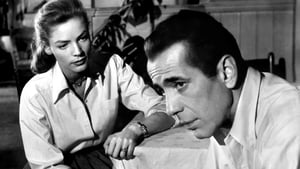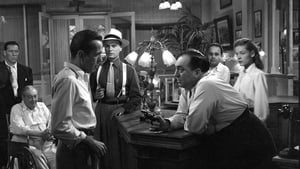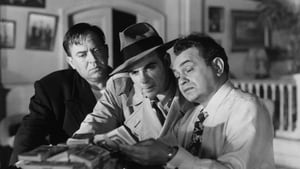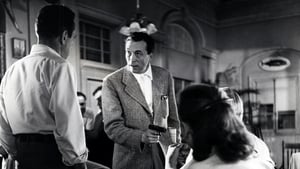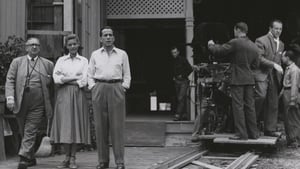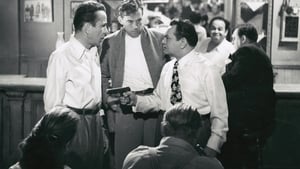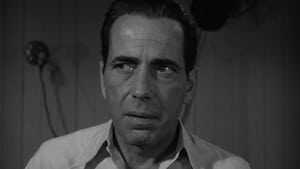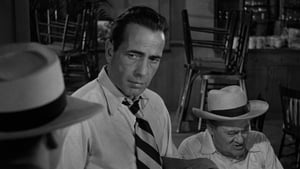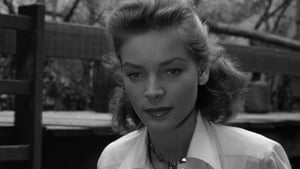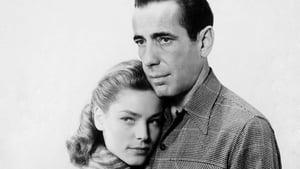Video Sources 0 Views
- Watch trailer
- Key Largo 1948 Colorized

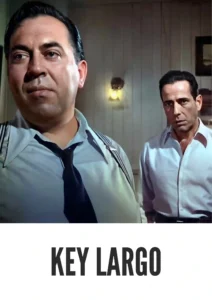
Synopsis
Table of Contents
Toggle
Step into the world of classic cinema with Key Largo, a riveting crime drama from 1948, now beautifully colorized for a fresh viewing experience. Directed by the legendary John Huston, this film showcases a masterful blend of suspense, romance, and moral complexity, making it a must-watch for fans of vintage cinema and newcomers alike. The colorization breathes new life into this iconic film, enhancing its dramatic moments and captivating performances.
Key Largo unfolds in a remote Florida hotel during a fierce hurricane. Frank McCloud (Humphrey Bogart), a World War II veteran, visits the hotel to pay his respects to the widow of a fallen comrade, Nora Temple (Lauren Bacall). However, their somber reunion is interrupted when they discover that the hotel is being held hostage by a group of gangsters led by the ruthless Johnny Rocco (Edward G. Robinson).As the storm rages outside, tensions mount inside the hotel. Frank must confront his past while trying to protect Nora and her father, an elderly war veteran played by Lionel Barrymore. The film expertly weaves themes of loyalty, courage, and moral ambiguity as Frank devises a plan to outsmart Rocco and his henchmen. The climactic showdown amidst the chaos of the hurricane highlights both the physical and emotional storms faced by the characters.
The film features an outstanding ensemble cast that brings this gripping story to life:
- Humphrey Bogart as Frank McCloud
- Lauren Bacall as Nora Temple
- Edward G. Robinson as Johnny Rocco
- Lionel Barrymore as James Temple
- Claire Trevor as Gaye Dawn
Key Largo is classified as a crime drama with elements of suspense and film noir. Its intricate character dynamics and moral dilemmas set against a backdrop of danger make it an engaging film that resonates with audiences even today.
Released in 1948, Key Largo stands as a significant work in American cinema, marking one of the final collaborations between Bogart and Bacall. The film captures post-war anxieties and reflects societal tensions of the time. John Huston’s direction combined with Richard Brooks’ screenplay creates an atmosphere filled with suspense and emotional depth. While Key Largo may not have received immediate acclaim upon release, it has since been recognized as a classic that showcases the talents of its cast and crew.
This colorized version of Key Largo has been carefully restored using advanced digital techniques that enhance its visual appeal while preserving the film’s original essence. The colorization process involved meticulous analysis of each scene’s grayscale tones to assign appropriate colors that reflect the mood and setting accurately. This modern approach allows contemporary audiences to appreciate the film’s artistry in a new light, making it more accessible without detracting from its historical significance.
- : John Huston
- : Richard Brooks
- : The play by Maxwell Anderson
- : Karl Freund
- : Russell Schoengarth
- : Warner Bros.
- : Warner Bros.
- : 101 minutes
- : MP4
- : HD (1080p)
- : Compatible with most devices including smartphones, tablets, computers, and smart TVs.
Over time, Key Largo has been celebrated as one of Bogart’s standout performances alongside Bacall’s compelling portrayal of Nora Temple. Critics have praised its tight screenplay and atmospheric direction by Huston. The film is often regarded as an essential piece of American cinema history that encapsulates the essence of post-war tension and moral conflict. Its blend of suspenseful storytelling with rich character development continues to captivate audiences today.
- : What is Key Largo about?
- A: Key Largo is a crime drama centered around a veteran who confronts gangsters while visiting a hotel during a hurricane.
- : Is Key Largo (1948) considered a classic?
- A: Yes, Key Largo is widely regarded as a classic due to its strong performances and impactful storytelling.
- : Is this version of Key Largo colorized?
- A: Yes, this version has been professionally colorized to enhance your viewing experience.
- : What makes Key Largo interesting for classic film fans?
- A: The film features iconic performances from Bogart and Bacall, showcasing their chemistry while exploring themes of loyalty and courage.
- : What is the download format?
- A: The download format is MP4, which is compatible with most devices.
- : What resolution is the download?
- A: The resolution is HD (1080p), providing an excellent viewing experience.
Watch Key Largo Today!
